
Annual Forbs Around Las Vegas, Vegetation Around Las Vegas
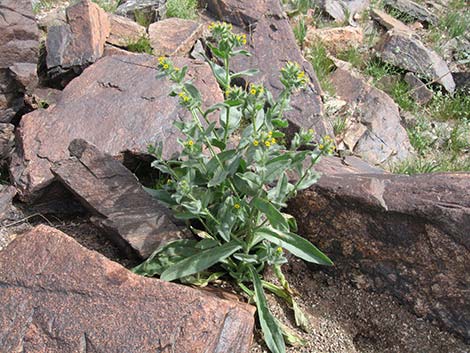 |
General: Bristly Fiddleneck (Amsinckia tessellata) is an upright annual forb with lanceolate leaves. The leaves and stems are covered by thousands of stiff, tiny hairs that dry to become spines. The flowers are yellow, tubular with five lobes, and there are red spots inside the tube. Calyx lobes (sepals) are unequal in width, with 2–4 calyx lobes formed from the fusion of sepals below the middle. Calyx lobes notched at the tip. The stems are hairy. The leaves are entire, and the stem is upright. The corolla tubes are long (8–16 mm long). Other species of Fiddleneck do not match this set of characteristics. In our desert area, another species, Common Fiddleneck (Amsinckia menziesii), has unfused corolla parts and the flower tube is short (4-7 mm). Bristly Fiddleneck is a common component of desert vegetation communities on almost all soils. Around Las Vegas, look for this species everywhere, especially in Mojave Desert Scrub where it often grows under Creosote Bushes and other tall shrubs. |
 |
Family: Borage (Boraginaceae). Other Names: Devil's Lettuce, Fiddleneck. Plant Form: Upright, herbaceous annual with stems arising from base. Height: Usually about 2-ft high, to about 4 feet. Stems: Several, upright, spiny. |
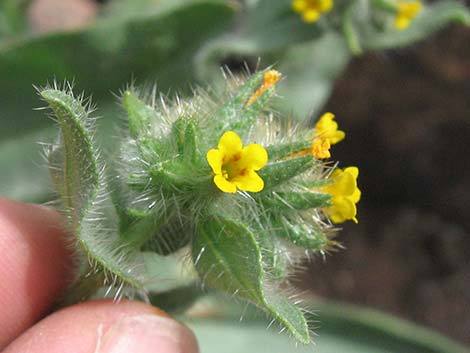 |
Leaves: lanceolate, to about 8 inches. Covered with tiny bumps, each with a hair that dries to become a bristle. Flowers: Blooms in the spring. Flowers tubular, yellow, with red spot inside. Seeds: Habitat: Dry, rocky, gravel soils. Elevation: To about 7,000 feet. Distribution: Western US to Central America. Comments: The dried spines are nasty. When the plant dries, the tiny hairs dry to become spines -- some of the most irritating things in the desert because they get in your skin, eyes, and clothes before you know it, and then they are difficult to remove. When walking through a field of dried Bristly Fiddleneck, the dried hairs break off and swirl in the breeze around you, flowing up your pants and into your eyes. It is best to avoid them when possible. |
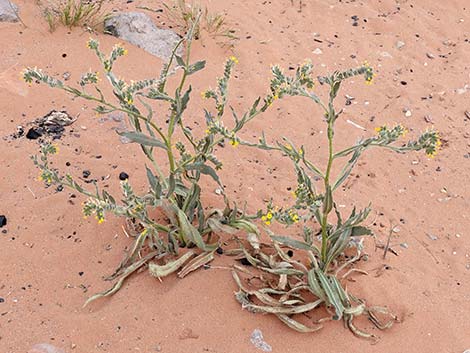 |
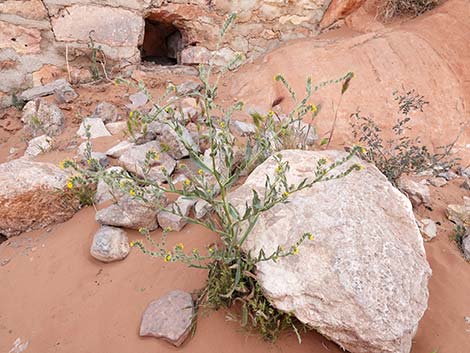 |
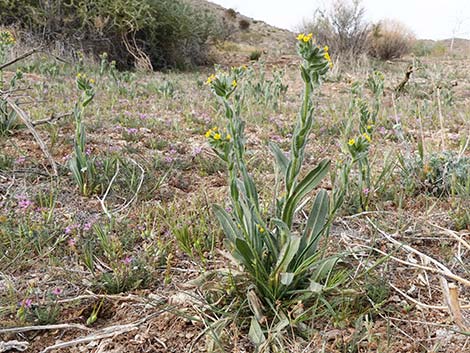 |
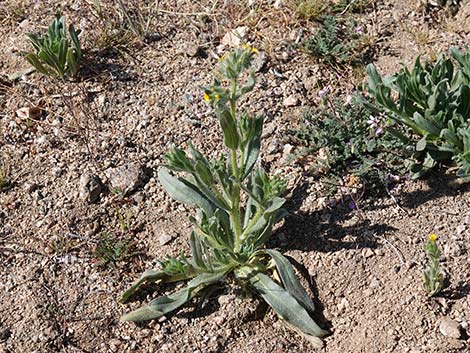 |
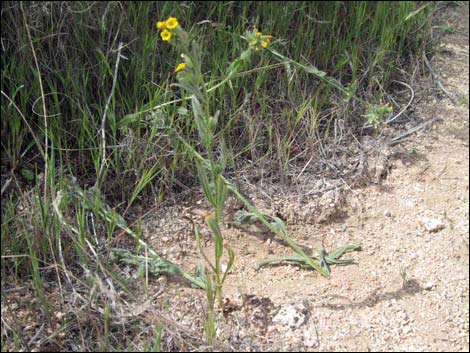 |
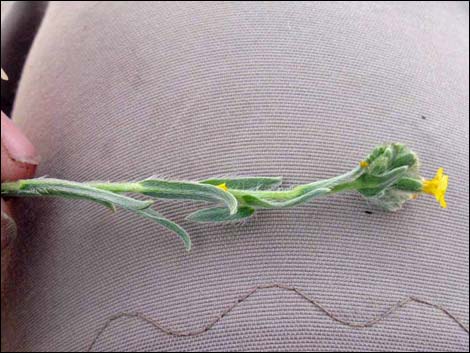 |
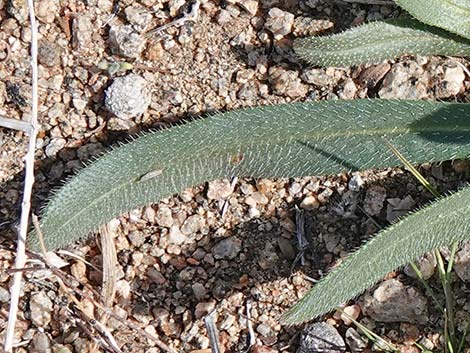 Leaves covered with tiny bumps, each bump with a bristle |
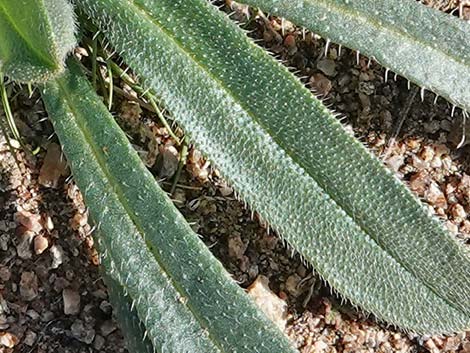 Leaves covered with tiny bumps, each bump with a bristle |
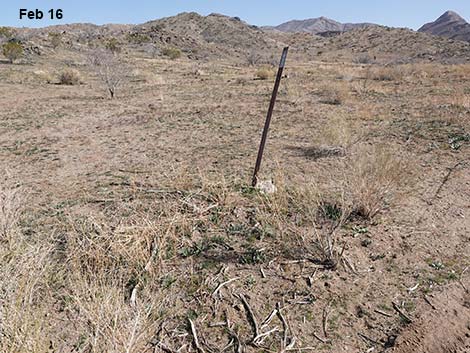 Early spring: most green is Bristly Fiddleneck |
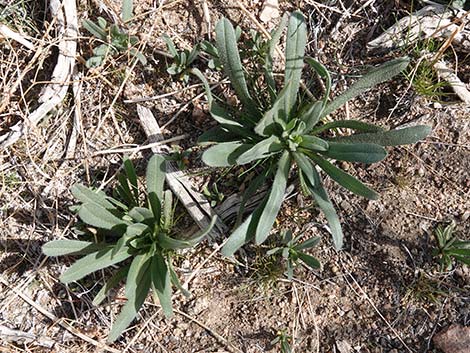 Early spring: most green is Bristly Fiddleneck |
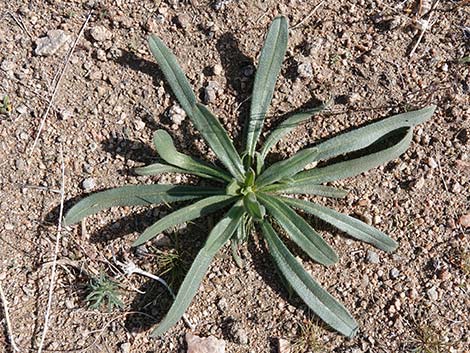 Early spring: most green is Bristly Fiddleneck |
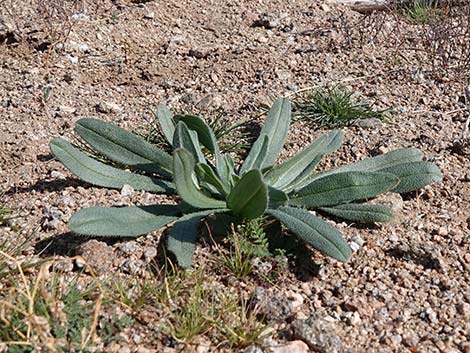 Early spring: most green is Bristly Fiddleneck |
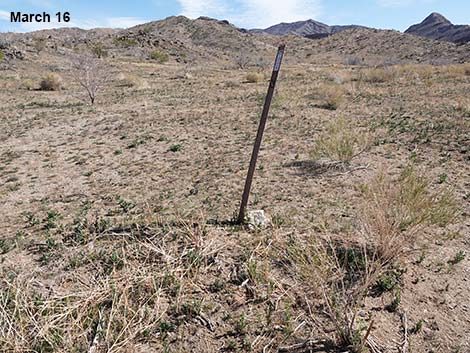 Middle spring: most green is still Bristly Fiddleneck |
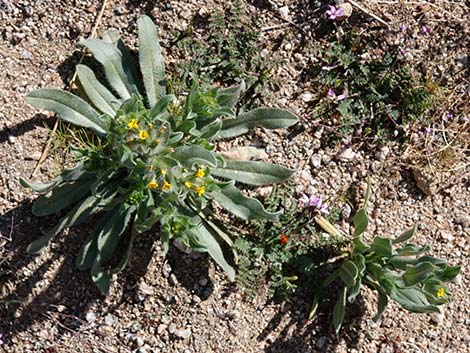 Middle spring: most green is still Bristly Fiddleneck and Stork's Bill |
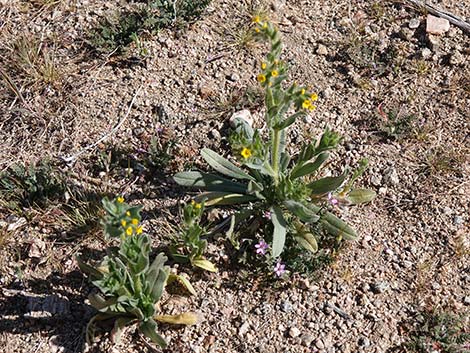 Middle spring: most green is still Bristly Fiddleneck and Stork's Bill |
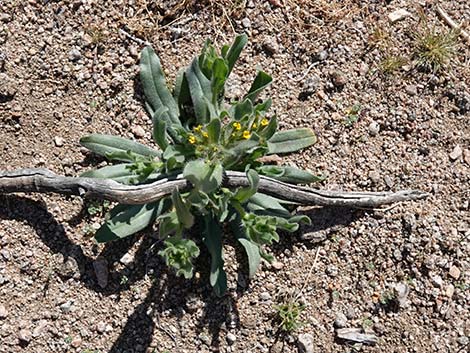 Middle spring: most green is still Bristly Fiddleneck |
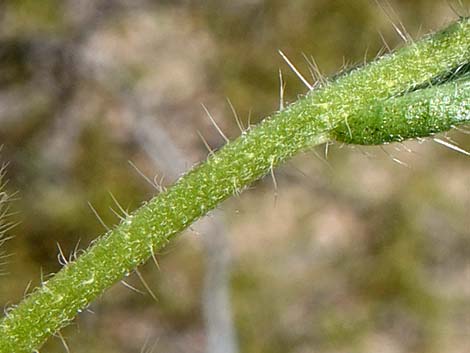 Stem with bristles |
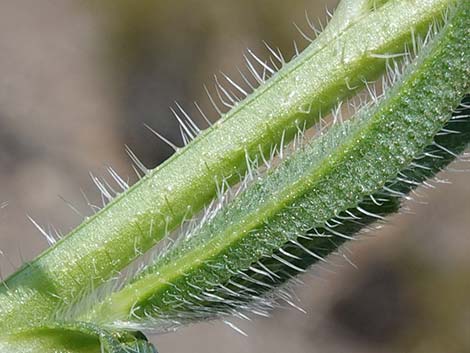 Stem with bristles |
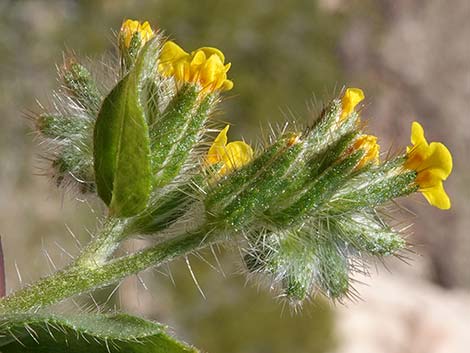 Bristly Fiddleneck flowerhead (lateral view) |
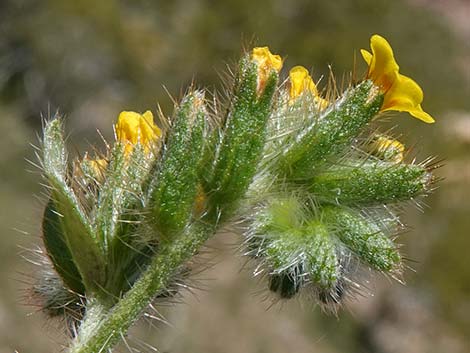 Bristly Fiddleneck flowerhead (lateral view) |
 Bristly Fiddleneck flowerhead |
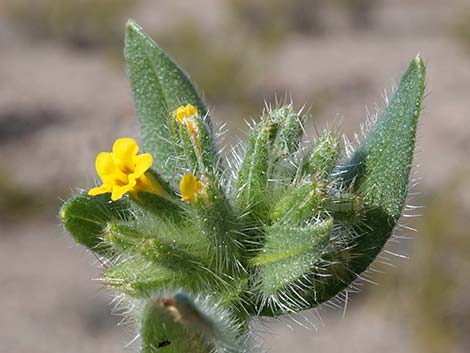 Bristly Fiddleneck flowerhead |
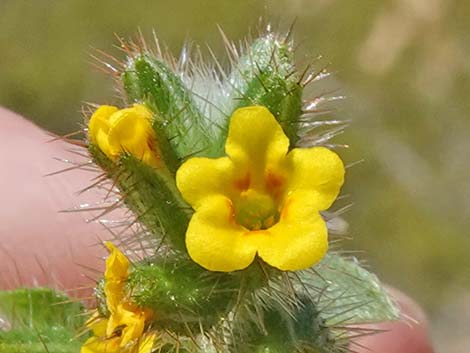 Bristly Fiddleneck flower: yellow, 5 lobes, red dots |
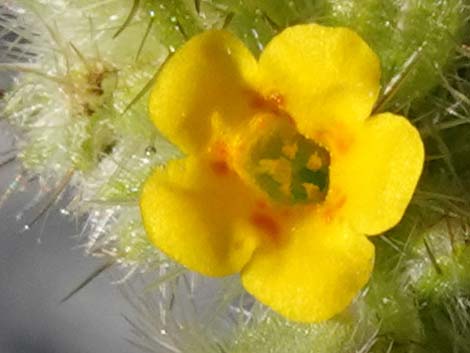 Bristly Fiddleneck flower: yellow, 5 lobes, red dots |
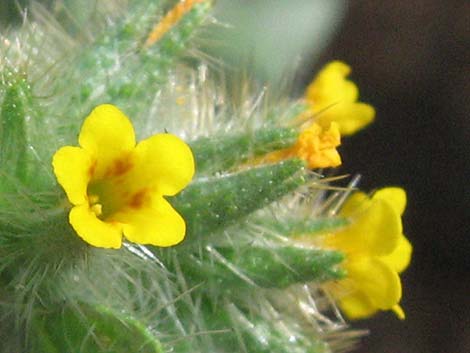 Bristly Fiddleneck fused sepals form a calyx lobe with notched tip |
 Bristly Fiddleneck fused sepals form 2-4 calyx lobes, each with notched tip |
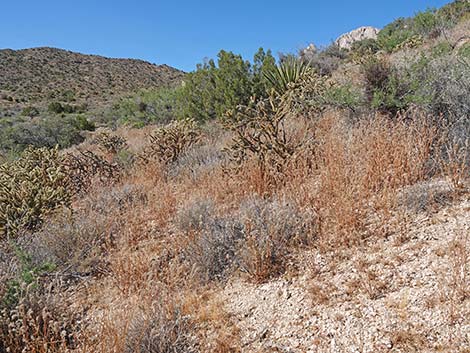 Dried Bristly Fiddleneck lie thickly on the summer landscape |
 Dried Bristly Fiddleneck lie thickly on the summer landscape |
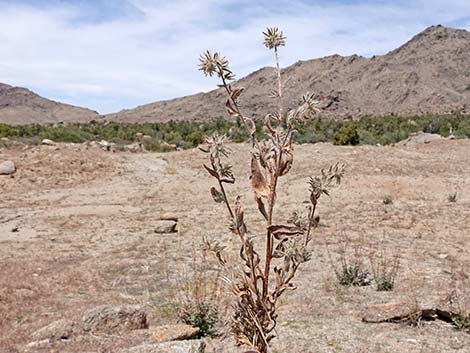 Bristly Fiddleneck: dry during summer |
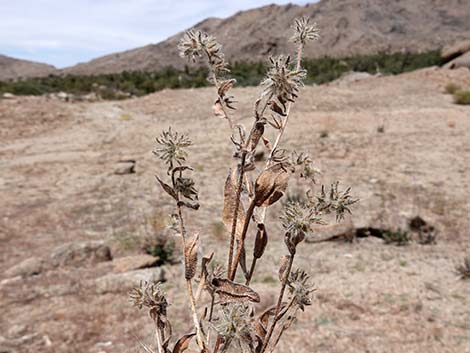 Bristly Fiddleneck: dry during summer |
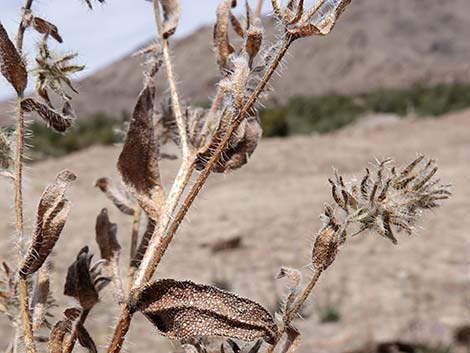 Bristly Fiddleneck with dry spines |
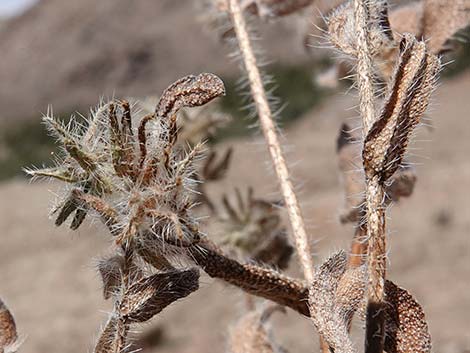 Bristly Fiddleneck with dry spines |
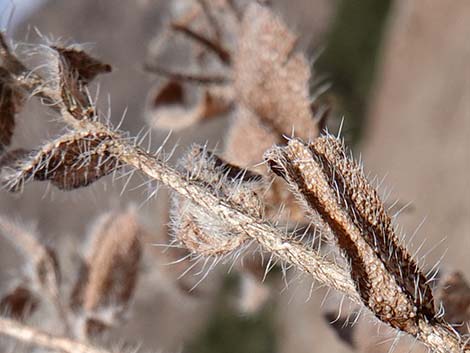 Bristly Fiddleneck stem and leaf with dry spines |
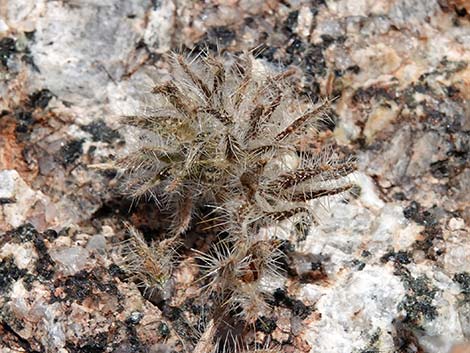 Bristly Fiddleneck flowerhead with dry spines |
Note: All distances, elevations, and other facts are approximate. Names generally follow the USDA database.
![]() ; Last updated 240616
; Last updated 240616
| All Annual Forbs | Plant Species Index | Glossary | Copyright, Conditions, Disclaimer | Home |